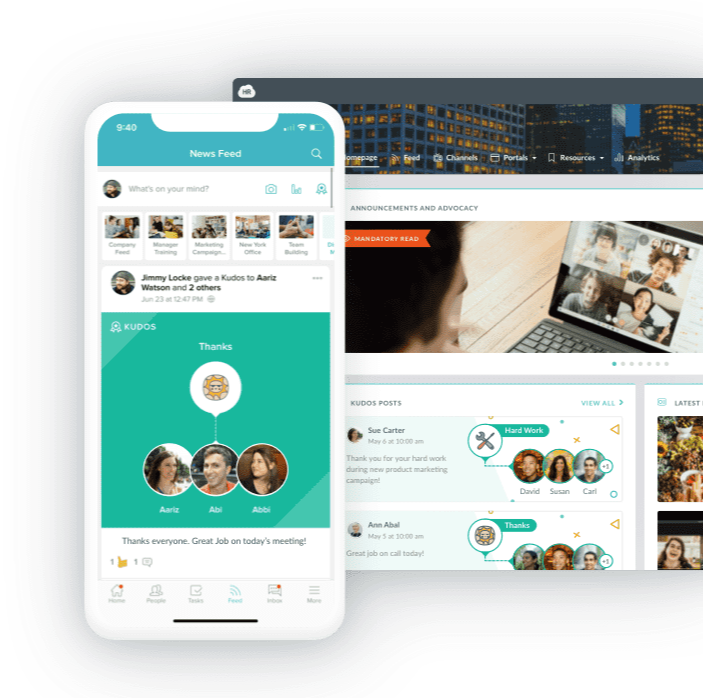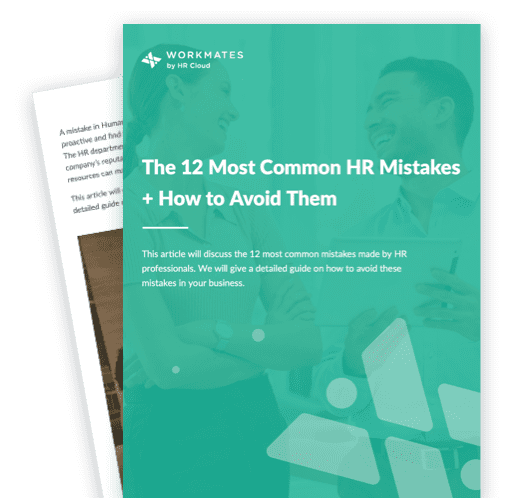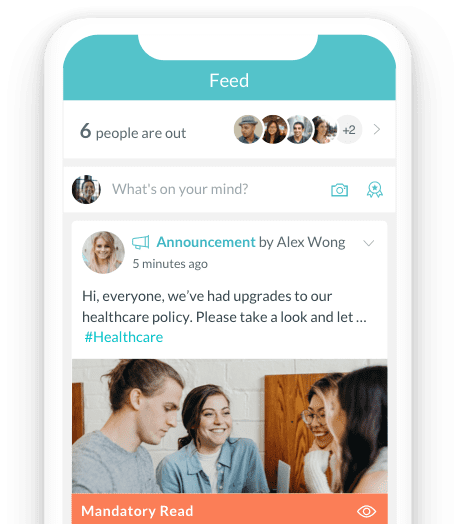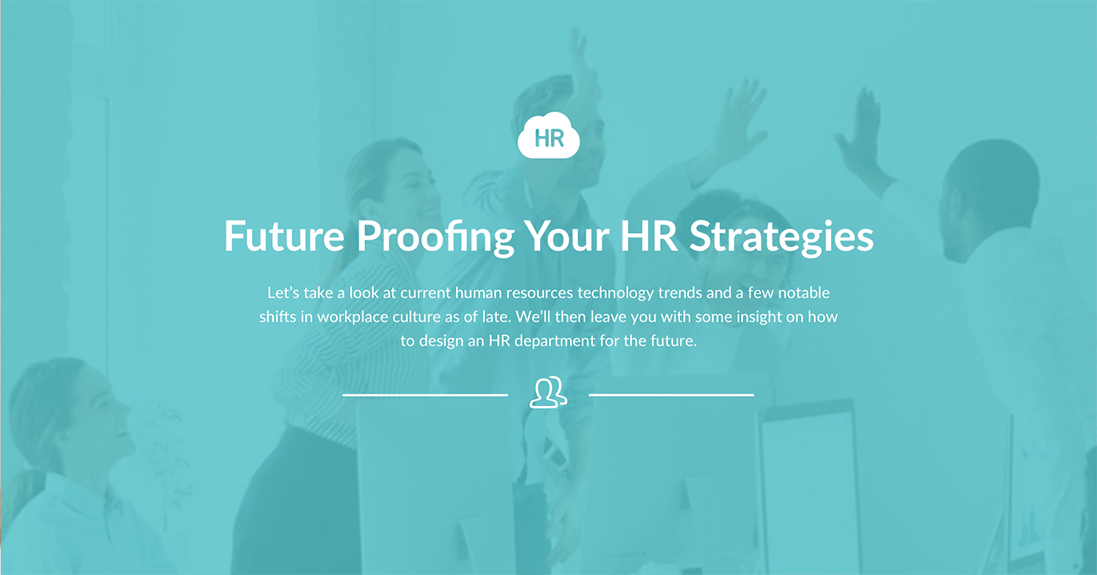Employees are one of the most valuable resources a company can have. The human resources department is responsible for building a talented team of employees who work well together and individually for the organization’s benefit. HR also takes on the hefty challenge of ensuring employees are wholly supported to perform at a high level.
Technological advancements and shifts in work culture continue to impact the way HR departments evolve. Human resources policies must be informed, flexible, and consistent if you want to ensure your department is set up to thrive in the future.
Let’s take a look at current human resources technology trends and a few notable shifts in workplace culture as of late. We’ll then leave you with some insight on how to design an HR department for the future.
Current Technology Trends in Human Resources and Shifts in Workplace Culture
Advancing technology continues to impact how we move through our personal lives and how efficient we are at work. Productive HR departments are especially mindful of current technology trends in their field and changes to the workplace that could impact how they do their jobs. Here’s a brief look into key HR technology trends and the state of workplace culture today.
Current trends in HR technology
Artificial Intelligence and automation are becoming the norm in most modern HR technology. AI-driven algorithms collect key employee and candidate data, thoroughly analyze it, generate actionable insights based on what’s learned.
Automation tools perform repetitive tasks like sending interview reminder emails, thank you messages, or organizing interview dates and times. AI and automation free up more time for HR teams to focus on tasks and projects that really need them.
They also boost employee engagement and performance through talent development and performance management tools. Their use in recruitment strategies is increasing as well because they help select potential matches faster and more accurately. AI-driven recruitment helps HR professionals get to know candidates more quickly by filtering their various social media profiles and other online activities.
Virtual-reality experiences are also being implemented more and more. They help streamline processes like interviews, onboarding, training and development, and job previews. Instead of being invited to an interview room, companies are inviting qualified candidates to a VR meeting space. They take new employees on a virtual tour of the office to get them comfortable before they arrive and engaged in the workplace culture.
The increased use of cloud-based HR software is another key trend to note. Any data entries in the cloud can be accessed in real-time, giving you the ability to make informed decisions faster and better control the data you collect.
Social Intranet Software that Encourages Employee Communication

Shifts in workplace culture
The COVID-19 global pandemic highlighted just how vital employee engagement and well-being are to productivity and performance. Physical, mental, and emotional health of all employees is now a huge priority for most companies. They’re pushing forward with health initiatives that ensure their employees can perform at their peak.
These health initiatives could include offering:
-
Tech tools like Fitbits, heart rate monitors, or blood sugar checkers to employees at discounted prices
-
Free or discounted gym memberships
-
Nutrition and/or personal trainer resources to aid employees’ physical health
-
Mental wellness resources like therapy or counseling
-
A health week at the office that allows employees to get certain health services on-site
-
Mental health and physical wellness team-building activities
Millennials and Gen Zers are taking over the majority of the workforce in the world. They’re especially interested in companies that offer personalized training and development plans for their employees. A blended learning approach that employs eLearning and in-class teaching resonate with these generations because it provides a self-directed learning experience. This modernized software focuses on up-skilling technical abilities and building more transferable soft skills like communication, time management, and empathy for others.
Many companies are offering fully remote or hybrid work schedules to their employees. These scheduling options resonate well with workers because of their flexibility and emphasis on giving them more control over their job responsibilities. HR professionals are also seeing a positive impact on recruiting because of this shift to remote work. They’re able to engage with top talent all over the world and hire a diverse workforce.
Future-Proofing Your HR Department Design
As you keep up with current trends and analyze how workplace culture is changing, you’re probably wondering how to future proof your HR department.
Instilling agility and flexibility in every aspect of your department is key to designing an HR team that can meet the future head-on.
Here are some tips on preparing your HR department for the future in light of technological advancements and shifts in work culture.
Adopt the right methodology
Consistency is crucial to building a trust-filled, loyal, engaged HR team. Without a specific structure for your HR team, you won’t be able to keep it organized, up-to-date, and productive. You must choose a suitable methodology for how you’re going to manage your HR department.
An agile methodology, for example, encourages flexibility and moves away from strict documentation as a hard requirement. This methodology is perfect for your team if your members are creative, adaptable, and geared up for an innovative future. The four values of an agile workforce are:
-
Individuals and interactions over processes and tools.
-
Working software over comprehensive documentation.
-
Customer collaboration over contract negotiation.
-
Responding to change over following a plan.
What’s the process for implementing changes? Who makes the final decision? How are projects delegated and teams formed? These are all questions you should answer to begin constructing the methods best for your team. Create a solid team structure by identifying how your team members work best together and how each of them thrives individually.
Keep up-to-date with trends
There’s a reason we dedicated an entire section of this article to current HR technology trends and shifts in workplace culture. Staying up to date with what’s happening in your industry is one of the best ways to prepare your department for the future. To keep your HR strategies current and effective, you must be mindful of popular HR trends and workplace culture shifts as they arise.
One crucial trend in the workplace right now is the rise of the gig economy. HR professionals are working with freelancers and contractors at a much higher rate these days. Fill in the gaps with full and part-time employees, and you’ve got yourself a well-rounded team. Being familiar with this trend allows you to keep up with competitors and hire from a wider pool of talent just as they are doing.
Another key trend is that most human resources departments are taking on a complete digital transformation. You should be comfortable with data and mindful of its influence on a seamless transition to digital platforms for your HR processes and procedures. Bookmark any resources that provide information about trends in HR and leverage this knowledge with your team.

HR mistakes impact your entire organization. Learn how to avoid the 12 most common mistakes with our free ebook.
Download nowImplement top-tier technology and software
Your HR department’s effectiveness in the future will be highly dependent on the technology and software you implement. If you’re using low-grade software or out-of-date technology, chances are you’re a step behind your competitors. You’re most likely missing out on making critical improvements to how your team communicates, collaborates, and carries out its responsibilities.
Your Human Resource Information System or HRIS, for example, should be top-tier to ensure you’re able to grow your workforce and keep up with changes in your company effectively. Your HRIS helps keep employees engaged, satisfied, and continuously improving by fusing IT and HR functions like data entry, tracking, and management for human resources, payroll, and accounting.
You also want to ensure you’re factoring in the shift to remote work and implementing top-tier technology to keep your HR department productive, communicative, and able to perform their job functions as if they were in the office.
Conclusion
You can future-proof your human resources department by instilling agility and flexibility in every aspect. Prepare your HR department for the future by adopting the proper methodology to run your day-to-day, keeping current with HR technology trends and workplace shifts, and implementing top-tier technology and software.

About Author: This article is written by a marketing team member at HR Cloud. HR Cloud is a leading provider of proven HR solutions, including recruiting, onboarding, employee communications & engagement, and rewards & recognition. Our user-friendly software increases employee productivity, delivers time and cost savings, and minimizes compliance risk.
Keep Reading
Secure Onboarding: Best Practices for Protecting Data with Remote Hires
The option of working from home also means that organizations can hire anyone worldwide;
Internal Communication Best Practices: A Complete Guide for Modern Workplaces (Free Templates Inside)
In modern workplaces internal communication has evolved far beyond emails and bulletin


